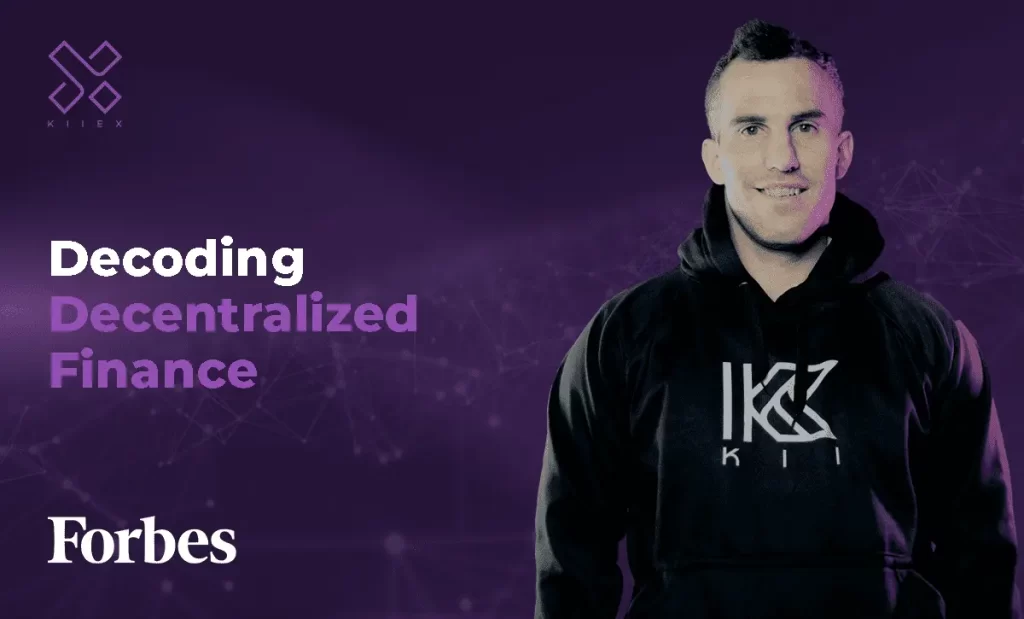The trend over the last 50 years has been towards centralized custody of our assets. In the 50s, we started depositing our cash with the banks because storing it under our bed was inefficient as inflation increased. In the 70s, our stocks and bonds were warehoused with broker/dealers because bearer issuing was too risky. In the 90s, after the launch of the internet, our emails became stored on centralized servers because mail started to fill our offices. Now, 23 years into the 21st century, our photos, documents, passwords, i.e. practically everything that defines us is stored on the cloud. The trend has been towards centralized custodial safeguarding. DeFi is starting to redefine that trend.
CeFi vs. DeFi
Centralized finance (CeFi) in crypto is what it sounds like – the centralized safeguarding of our digital assets where centralized exchanges can offer interest bearing returns on those assets. Users are KYC’d, passwords are stored centrally within the company, and security of digital assets is managed by authentication keys stored with that company. Many exchanges practice similar underwriting tactics to loan out user’s funds at higher rates than they pay. Its very similar to the current bank model. When they fail at this (i.e BlockFi, Celcius, Silicon Valley Bank, etc.) user deposits become greater than the bank’s assets, causing a bank run. Default becomes inevitable and dispositors fund are lost.
Decentralized finance (DeFi) in crypto is changing the way assets are stored, traded, loaned, and borrowed. Users can open up DeFi wallets without KYC and manage their own security, normally in the form of 12 – 24 randomized word-keys, authenticated by 6-digit passwords and facial recognition. If those keys are misplaced or forgotten, funds are lost forever. The user is in control.
TLV: Total Value Locked
DeFi is challenging the centralized custody trend not because users can store their assets, but because these aggregate DeFi users can now interact without a centralized exchange or a traditional broker/dealer in the form of Smart Contracts on a blockchain.
DeFi is primarily used for trading and credit (lending and borrowing). It allows users to post essential and non-essential assets as collateral for loans. Smart contracts take the human error out of underwriting, and if the smart contract algorithm is coded correctly, there will be no defaults. Smart contracts usually require collateral to be posted with ~150% loan-to-value ratios that protect the lender. If the loan-to-value ratios cross the threshold, the collateral is called, and the lender is covered.
The majority of DeFi protocols occur on the Ethereum, Tron, and BSC blockchains. In 2021, Total Value Locked (TLV) in these protocols hit an all-time high of $180 Billion USD. Since then, TLV has dropped to ~$40 billion USD throughout the crypto winter, a ~78% decline. However, in token terms, ETH and BSC protocols declined 50% and Tron declined 15%. Users haven’t left DeFi. The values decreased in USD nominal terms as those tokens decreased in nominal value. DeFi protocols operated as they were designed to during recent market turmoil, calling on collateral positions as loan-to-value ratios crossed the threshold, and no depositor funds were lost. The sector is still very much alive.
DeFi Could Change the Game
This is a breakthrough model because Lenders who are searching for yield can now find it without safeguarding their assets with a centralized lender. Borrowers who want to yield on their assets without selling can do so. Credit terms can be extended to anyone who can meet the smart contract terms without prejudice.
Uniswap, the largest Decentralized Exchange (DEX) is used to trade digital assets. Centralized exchanges and traditional broker/dealers use a centralized order book to cross and execute buy/sell orders at the same price acting as the middleman. Uniswap uses an Automated Market Maker (AMM) model where lenders can post liquidity to the DEX in the form of trading pairs to create liquidity pools for that specific trading pair. When a user trades on that liquidity, the lender receives a commission on that trade, removing the middleman. The model is ingenious and could revolutionize public markets.
Is There Real Economic Value in DeFi?
Like traditional options trading, DeFi lending works well for traders in bull markets where the underlying collateral is generally appreciating in value away from the loan-to-value threshold. When the opposite happens, smart contracts call on collateral automatically, and sell-offs start to begin. Markets start to unwind positions and volatility increases. DeFi for trading is great for liquidity, and apart from no geographical restrictions, it’s one of the main reasons digital assets can trade with liquidity premiums. However, it’s yet to be considered a real economic driver.
Credit is important in the economy because it funds the growth of individuals and small business. The issue with DeFi is that it’s rather inefficient for individuals or small business’ to post greater liquid collateral than what is loaned. These protocols have yet to factor in positive cash flows from operations, and loan-to-value ratios need to be less than 100% for DeFi to fund economic development.
In a real-world example, if nomina payments for employees are recorded on the blockchain, the Libranza model could be written in a smart contract. Loans could be issued to employees from liquidity pools and interest payments would be discounted automatically from their nomina payment. If an employee is fired or if nomina payments stopped, collateral could be called in the form of insurance payouts, also written in a smart contract, also funded by liquidity pools.
Microcredit isn’t the only real-world application. The model could work for small business lending, tokenization of government bonds, commodities lending, and most notably, stablecoin minting. It solves a big problem – It allows users to produce earnings on their cash stored under the bed.
If smart contracts can replace consumer underwriting, DeFi will transform the credit industry.Read the full article written by Alex Cavallero, COO of Kii Global, on the Forbes website.










